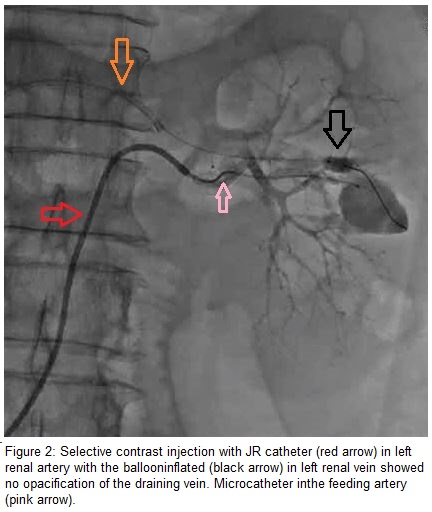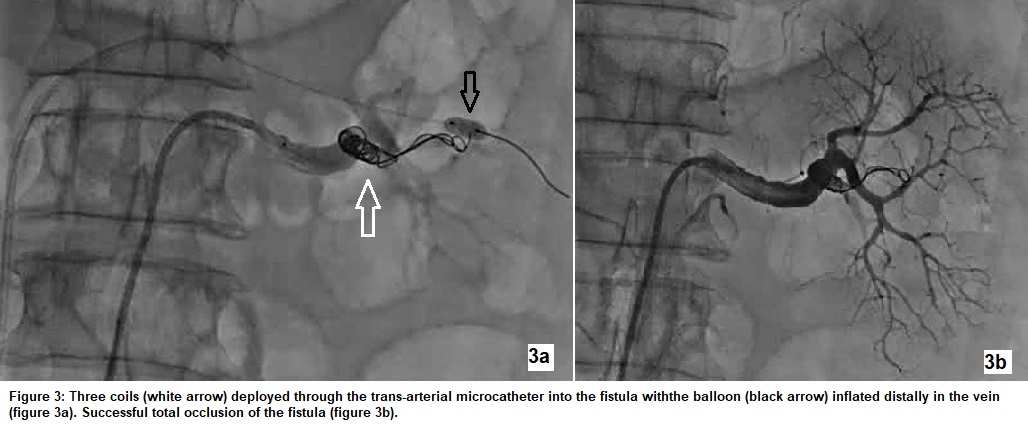Lots of interesting abstracts and cases were submitted for TCTAP 2025. Below are the accepted ones after a thorough review by our official reviewers. Don’t miss the opportunity to expand your knowledge and interact with authors as well as virtual participants by sharing your opinion in the comment section!
TCTAP C-234
Coil Embolization With Distal Protection Using Balloon Occlusion Technique in a Left Renal Arteriovenous Fistula Presenting With Gross Hematuria and Shock: A Case Report
By Harishankar Pratap Singh Chandel, Akhilesh Dubey, Shishir Soni
Presenter
Harishankar Pratap Singh Chandel
Authors
Harishankar Pratap Singh Chandel1, Akhilesh Dubey2, Shishir Soni3
Affiliation
Aditya Superspeciality Hospital, India1, Galaxy Hospital Jabalpur, India2, NSCB Medical College, India3,
View Study Report
TCTAP C-234
Endovascular - Other Endovascular Intervention
Coil Embolization With Distal Protection Using Balloon Occlusion Technique in a Left Renal Arteriovenous Fistula Presenting With Gross Hematuria and Shock: A Case Report
Harishankar Pratap Singh Chandel1, Akhilesh Dubey2, Shishir Soni3
Aditya Superspeciality Hospital, India1, Galaxy Hospital Jabalpur, India2, NSCB Medical College, India3,
Clinical Information
Patient initials or Identifier Number
Relevant Clinical History and Physical Exam
A 64-year male, presented with gross hematuria a month following penetrating trauma to the abdomen. The patient was in shock and immediately evaluated by the urology team and was referred for renal angiography suspecting vascular etiology. Renal angiography was done suggesting left renal arteriovenous fistula (RAVF).


Relevant Test Results Prior to Catheterization
The patient was taken up for Endovascular embolization. The procedure was conducted under local anaesthesia, and femoral punctures were done to establish right femoral arterial & venous access using 6F sheaths.
Relevant Catheterization Findings
A 6 F JR catheter was advanced into the proximal leftrenal artery with the help of 0.035’’ wire. Renal angiography revealed an enlarged interlobar renal artery and early opacification of an enlarged draining vein suggesting left RAVF (figure 1).
Interventional Management
Procedural Step
A 6F RDC catheter was advanced into the left renal vein followed by selective catheterization of the dilated vein with the help of 0.035’’hydrophilic guidewire. Then, a 3x8 mm balloon was advanced into the draining vein at the site of the fistula. A Super-selective catheterization of the feeding artery just proximal to the fistula was done with a 2.4FX150 microcatheter. Selective contrast injection with the balloon inflated distally showed no opacification of the draining vein and the exact site of the communication was located (figure 2). Two coils of 6x20 cm and 1 coil of 8x20 cm size were deployed through the trans-arterial microcatheter into the fistula with the balloon inflated distally in the vein (figure 3a). Balloon inflation prevented coil migration and protrusion of the coils into the draining vein. The final result was successful total occlusion of the fistula (figure 3b). This case highlights the use of a simple technique using distal balloon occlusion and delivery of coils using a microcatheter which is distinct from various other endovascular techniques described in the literature with the latter being complex and time-consuming. This patient was in shock and had gross hematuria therefore timely occlusion of left RAVF was life-saving. The patient had an uneventful hospital stay and was discharged on 4th day.




Case Summary
Distal balloon occlusion and delivery of coils using microcatheter is a simple and good alternative technique for occlusion of renal arteriovenous fistula especially when immediate closure is required.


